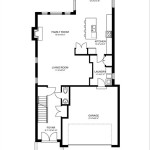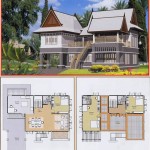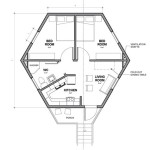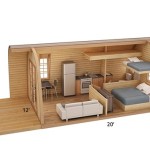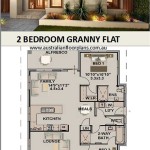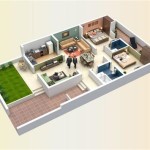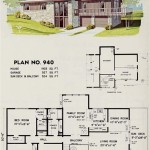```html
Micro House Plans: Maximizing Space and Minimizing Footprint
Micro house plans represent a growing trend in residential architecture, driven by factors such as increasing urbanization, environmental concerns, and a desire for simpler, more affordable living. These plans focus on efficient space utilization and offer complete living accommodations within a very small footprint, typically ranging from under 400 square feet to occasionally up to 600 square feet.
The appeal of micro houses extends beyond mere affordability. They present an opportunity to live more sustainably, minimize environmental impact, and reduce overall living expenses. The smaller size necessitates a conscious approach to possessions, encouraging a more minimalist lifestyle. Designing and constructing a micro house requires careful consideration of layout, materials, and functionality to ensure comfort and livability.
Key Point 1: The Core Principles of Micro House Design
Effective micro house design hinges on several key principles that prioritize functionality and spatial efficiency. The primary goal is to make every square inch count, often relying on multi-functional spaces, clever storage solutions, and verticality to maximize usability.
Multi-functional spaces are a cornerstone of micro house design. For example, a living room might transform into a bedroom with the use of a Murphy bed or a sofa bed. A dining table could fold down from a wall when needed and be neatly stored away when not in use. Kitchens often incorporate compact appliances and streamlined designs to minimize their footprint while still providing adequate cooking and storage space. Bathrooms utilize space-saving fixtures and layouts, such as corner showers and wall-mounted sinks.
Storage is critical in a micro house to prevent clutter and maintain a sense of order. Built-in storage solutions, such as drawers under beds, shelving integrated into walls, and hidden compartments, are essential. Vertical storage, using tall cabinets and shelves reaching to the ceiling, maximizes storage capacity without consuming valuable floor space.
The careful selection of materials and finishes contributes significantly to the overall feeling of spaciousness. Light colors and reflective surfaces can make a small space feel brighter and larger. Large windows or skylights are often incorporated to bring in natural light and connect the interior with the outdoors. Mirrors are also strategically placed to create the illusion of depth and expand the perceived space.
Key Point 2: Exploring Different Micro House Plan Configurations
Micro house plans come in a variety of configurations, each with its own advantages and disadvantages. The optimal configuration depends on individual needs, preferences, and site constraints. Common configurations include single-level layouts, lofted designs, and modular constructions.
Single-level layouts are the simplest and most accessible micro house design, particularly suitable for individuals with mobility limitations. These plans typically feature an open-concept living area that combines the living room, kitchen, and dining space. The bedroom and bathroom are usually located at the rear of the house to provide privacy. The main challenge with single-level layouts is maximizing space within a limited footprint, often requiring the integration of multi-functional furniture and clever storage solutions.
Lofted designs are a popular choice for micro houses, as they allow for the separation of sleeping areas from the main living space without significantly increasing the overall footprint. The lofted bedroom is typically accessed by a ladder or a narrow staircase, which can be a space-saving design in itself. The area beneath the loft can be used for storage, a home office, or a bathroom. While lofted designs offer more privacy, they may not be suitable for individuals with mobility issues or those who dislike climbing ladders or stairs.
Modular micro houses are constructed off-site in a factory and then transported to the building site. This construction method offers several advantages, including faster build times, reduced waste, and greater control over quality. Modular designs can be easily customized and combined to create larger living spaces. They also offer the flexibility to relocate the house if needed. However, transportation costs and site preparation can be significant factors to consider.
Key Point 3: Essential Considerations for Planning and Construction
Planning and constructing a micro house requires careful consideration of various factors, including zoning regulations, building codes, utility connections, and environmental impact. Addressing these considerations early in the planning process is crucial for a successful project.
Zoning regulations and building codes vary significantly depending on location. It is essential to research local regulations to ensure that the micro house design complies with all applicable requirements. Some jurisdictions may have minimum size requirements for dwellings, which could affect the feasibility of building a micro house. Setback requirements, height restrictions, and parking regulations are also important considerations. Obtaining the necessary permits and approvals is a critical step in the planning process.
Utility connections, such as water, sewer, electricity, and gas, need to be carefully planned and installed. The location of existing utility lines and the availability of connections at the building site should be assessed early on. If the micro house is located off-grid, alternative energy sources, such as solar panels and wind turbines, may be necessary. Waste management and water conservation strategies, such as composting toilets and rainwater harvesting systems, can further reduce the environmental impact of the micro house.
Minimizing the environmental impact of the micro house construction and operation is a key consideration for environmentally conscious homeowners. Using sustainable building materials, such as reclaimed wood, recycled content insulation, and low-VOC paints, can reduce the environmental footprint of the project. Energy-efficient appliances, LED lighting, and proper insulation can minimize energy consumption. Designing the micro house to maximize natural light and ventilation can further reduce the need for artificial lighting and air conditioning. Incorporating landscaping that promotes biodiversity and reduces water usage can also enhance the environmental sustainability of the micro house.
Furthermore, the cost of construction is a significant factor. While micro houses are generally more affordable than traditional homes, careful budgeting and cost management are essential. Obtaining multiple quotes from contractors, selecting cost-effective materials, and minimizing unnecessary features can help keep costs under control. DIY projects can also save money, but it is important to have the necessary skills and expertise to perform the work safely and effectively.
```
Tiny House Plan Examples

Tiny House Design Floor Plans

Affordable Tiny House 18 X 28 Adu In Law Cabin

Studio500 Modern Tiny House Plan 61custom

Tiny Home Plans House Floor And Designs

Tiny House Plans That Are Big On Style Houseplans Blog Com

27 Adorable Free Tiny House Floor Plans Craft Mart

Tiny House Design Floor Plans

Tiny Eco House Plans Off The Grid Sustainable Houses

Minim Micro House Floorplan Homes

